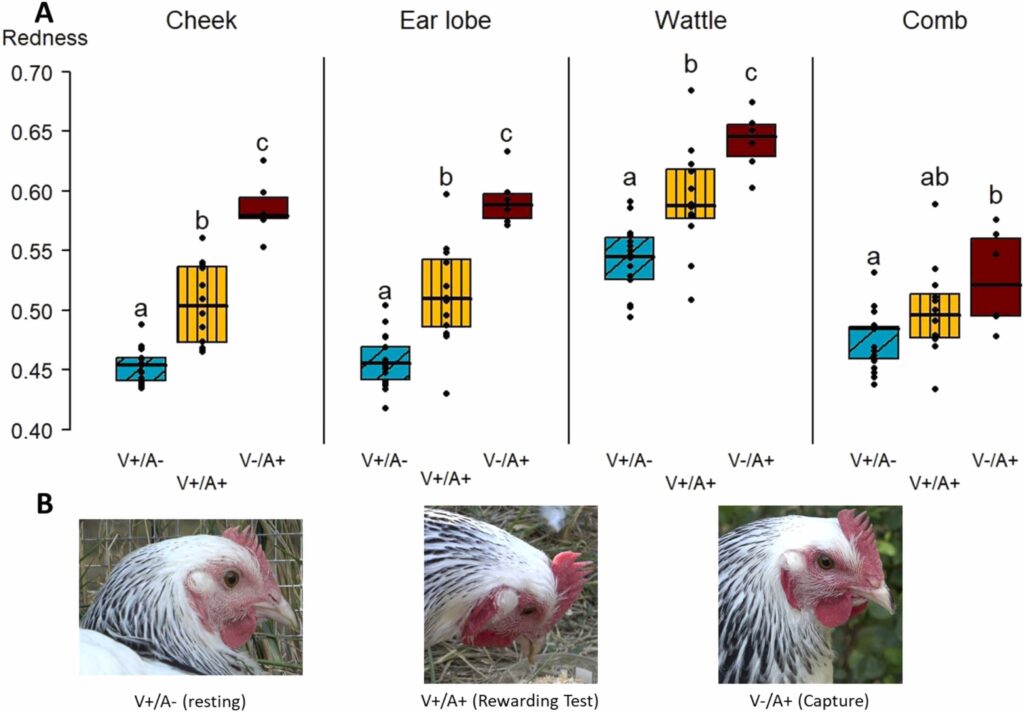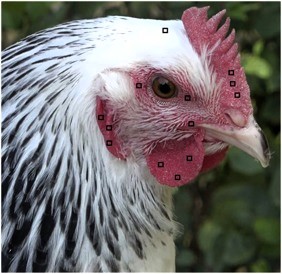Chickens go red-faced like humans when emotional, a study has found.
French experts studied Sussex laying hens.
They observed the feathered birds for three weeks.
During this time, the hens examined as scientists watched their reactions to getting fed or being captured.
- Advertisement -
READ MORE: Golden retriever gives birth to super rare GREEN puppy named ‘Shamrock’
The scientists, led by Delphine Soulet took 18,000 photos of the chickens to determine the results.

They found that the chicken’s face would go redder depending on their emotional state.
In a relaxed state, the chickens face showed no signs of redness.
But when feeling a positive reaction – such as receiving a tasty mealworm – the chickens would flush red.
- Advertisement -
If they were caught, they would go a deeper red colour in the face.
The team at the National Research Institute for Agriculture, Food and Environment carried out the study in the Loire Valley, France.
The purpose was to provide an insight into animal welfare – helping human understand negative emotions from animals.
- Advertisement -
However, the researchers also wanted examine the relationships between animals and humans.

They separated the hens into two groups of 13, as reported on What’s The Jam.
One group spent time with the same human for five weeks.
But the other group didn’t have close human interaction.
The hens that were bonded with one person maintained a much lighter skin colour in their faces.
This suggests they were more relaxed compared to the other hens – highlighting the impact of human relationships on animals.
The study reads: “In our study, we observed significant variations in facial redness among hens exposed to contrasting emotional contexts in a semi-natural setting in the first experiment.”
Notably, hens exhibited less redness in calm situations compared to rewarding situations, while they appeared reddest in fear-related situations.”
It adds: “The present study suggests that a hen’s facial redness changes based on its affective state, providing a potential way to assess its well-being and relationship with humans.
“Although our findings are preliminary due to a small sample size, they hint that less redness in the cheek and ear lobes may indicate calm and contentment states.”
“This introduces the idea of using redness as a welfare marker, but further research is needed.
“Understanding that the intensity of redness can show how sensitive hens are to different situations and analyzing these variations could help us to grasp their perceptions of the environment”
READ MORE: Man reunited with dog he lost year ago during cycling trip


















